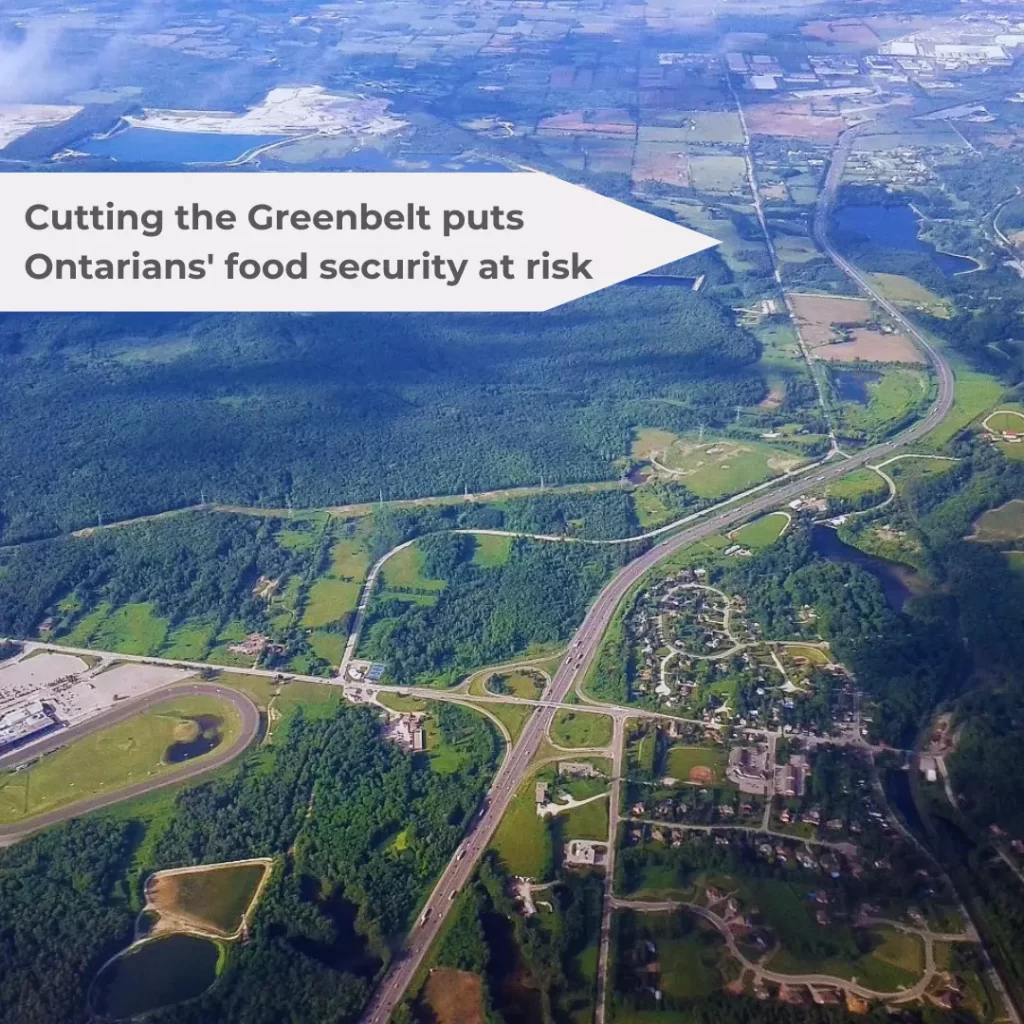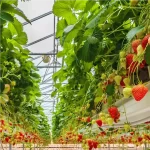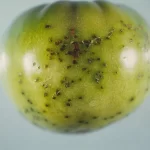Cutting the Greenbelt puts Ontarians’ food security at risk
This past weekend, grassroots organizations and residents of all ages across Southern Ontario bundled into their coats and tuques to rally and raise signs saying “Save the Greenbelt” and “Keep the Green” while chanting “Hands off the Greenbelt!”. A palpable sense of frustration for the need to maintain environmental stewardship of the Ontario Greenbelt can be felt through pictures and videos online.
The Ontario Government passed Bill 23, More Homes Built Faster Act, 2022, last week as part of the province’s plan to build 1.5 million homes in 10 years by permitting development on parts of the Greenbelt. Not only will this bill not solve the heart of the issue: build affordable housing, it could result in higher property taxes due to lower development fees, it will diminish Conservation Authority powers, and reduce the Greenbelt’s natural capability to provide ecosystem and human health—among a multitude of social and environmental ramifications.
Cutting the Greenbelt also means Ontarians’ food security is at risk. It will affect us all regardless of whether you’re a grower or a consumer. Paving the Greenbelt will hurt us financially as individuals, economically as a province, and worsen our quality of living now and for generations to come.
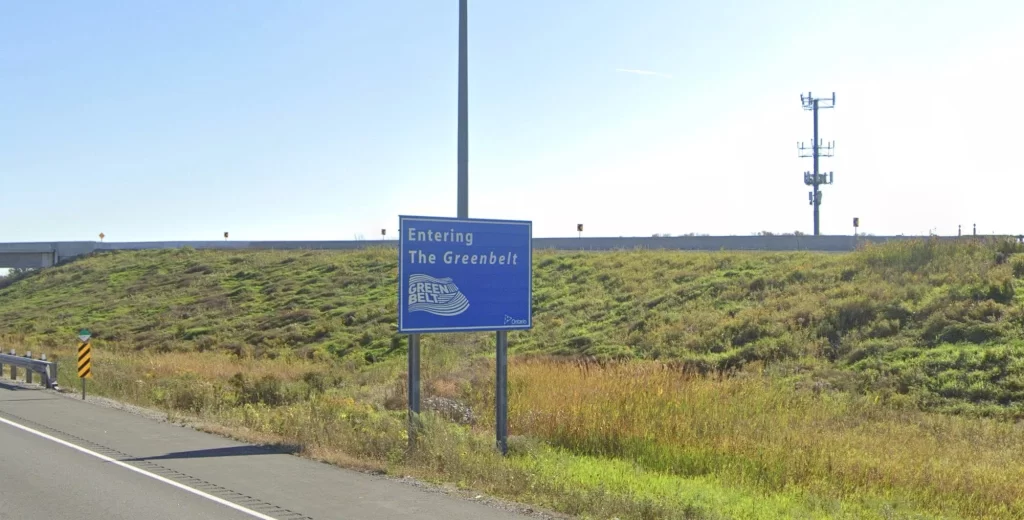
What is the Ontario Greenbelt?
The Ontario Greenbelt is the largest greenbelt in the world, stretching from Niagara-on-the-Lake through the Greater Toronto and Hamilton Area to the north of Coburg, including areas in the Oak Ridges Moraine and the Niagara Escarpment. It is 2 million acres of protected land that contributes to Ontario’s agricultural and tourism sectors while naturally providing clean air and water for us. It was established in 2005 to reduce urban sprawl and protect farmland and natural ecosystems.
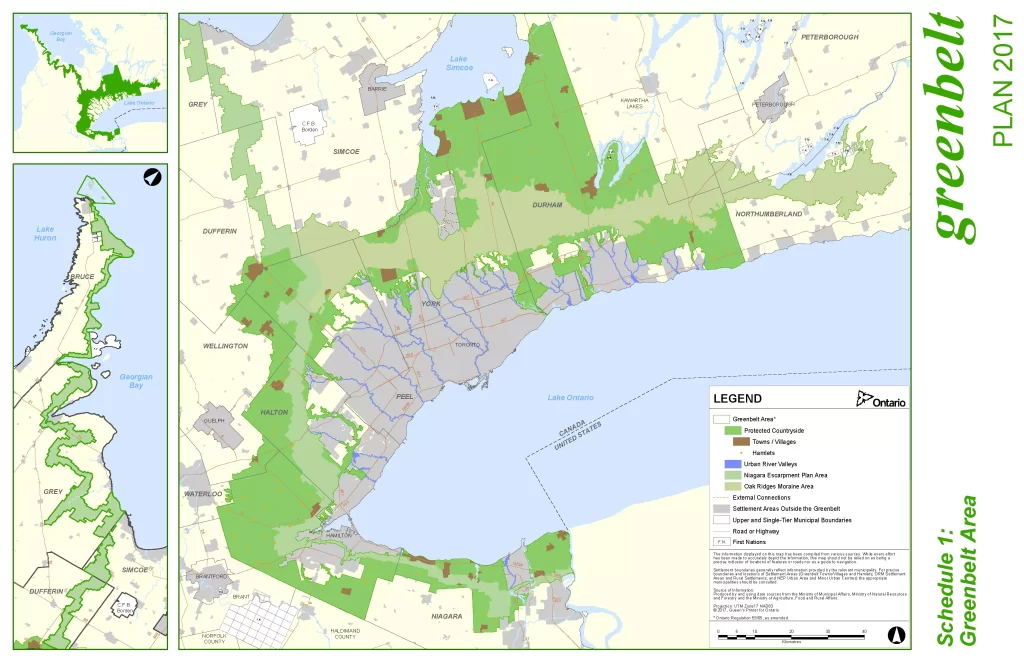
How does cutting the Greenbelt affect food security in Ontario?
Due to its inherent arable soil and prime geographic location and climate, the Greenbelt is excellent for farming certain crops (e.g. apples, apricots, grapes) and supplying food to nearby densely-populated cities and regions such as Toronto, York, Durham, Peel, and Niagara. Reducing the Greenbelt will mean the following great losses to our food systems, ecosystems, and economy:
We provide great overviews of many agricultural microorganisms. Subscribe to stay updated!
The Greenbelt’s contribution to Ontario’s agri-food sector
In 2020, the Greenbelt’s agri-food sector generated an estimated $4.1 billion in GDP and nearly 59,000 agricultural jobs, according to the Greenbelt Foundation. The Greenbelt is home to more than 4,700 farms, 1.8 million people, and employs 0.5% of the province’s population (not including foreign workers who comprise a large portion of agricultural employees). For 0.5% of Ontario’s population to contribute nearly 10% of the estimated provincial GDP ($46.3 billion) speaks to the impressive strength of the labour provided by the people and the land of the Greenbelt.
In particular, the fruit and vegetable sector in the Greenbelt supplies fresh, local produce to Ontarians throughout the year, including apples, cucumber, cauliflower, carrots, green beans, spinach, potatoes, strawberries, zucchinis, squashes, watermelons, onions, pumpkins, and much more.
The Greenbelt’s farmland acreage is small but productive in contributing to Ontario’s food supply
In 2016, the Greenbelt accounted for 6.1% of Ontario’s farmland but covered more than 50% of the province’s fruit acreage, 17.6% of its greenhouse production area, and 10.7% of the vegetable acreage in the province. Namely, the Greenbelt accounts for more than 80% of all of Ontario’s acreage dedicated to growing grapes, peaches, plums, prunes, and apricots, and 23-66% of the acreage for sweet and sour cherries. More than 66% of Ontario’s acreage is devoted to celery in the Greenbelt, 47% to cauliflower, and more than 25% to lettuce, spinach, and carrot.
Reducing the Greenbelt farmland will reduce the food supply, leading to more costly food imports and increased vulnerability. In 2020, Canada imported $3.5 billion in field-grown vegetables and $6.6 million in fruits, most of which can be grown in the Greenbelt and in Ontario. Those values will only increase as the Greenbelt is diminished and as Ontario has less capability of producing field-grown foods. Imports weaken our food supply chain’s ability to deliver fresh and affordable foods, and can prompt a rise in food prices during extreme events such as the pandemic, Russia’s war on Ukraine, and recently the lettuce shortage in California.
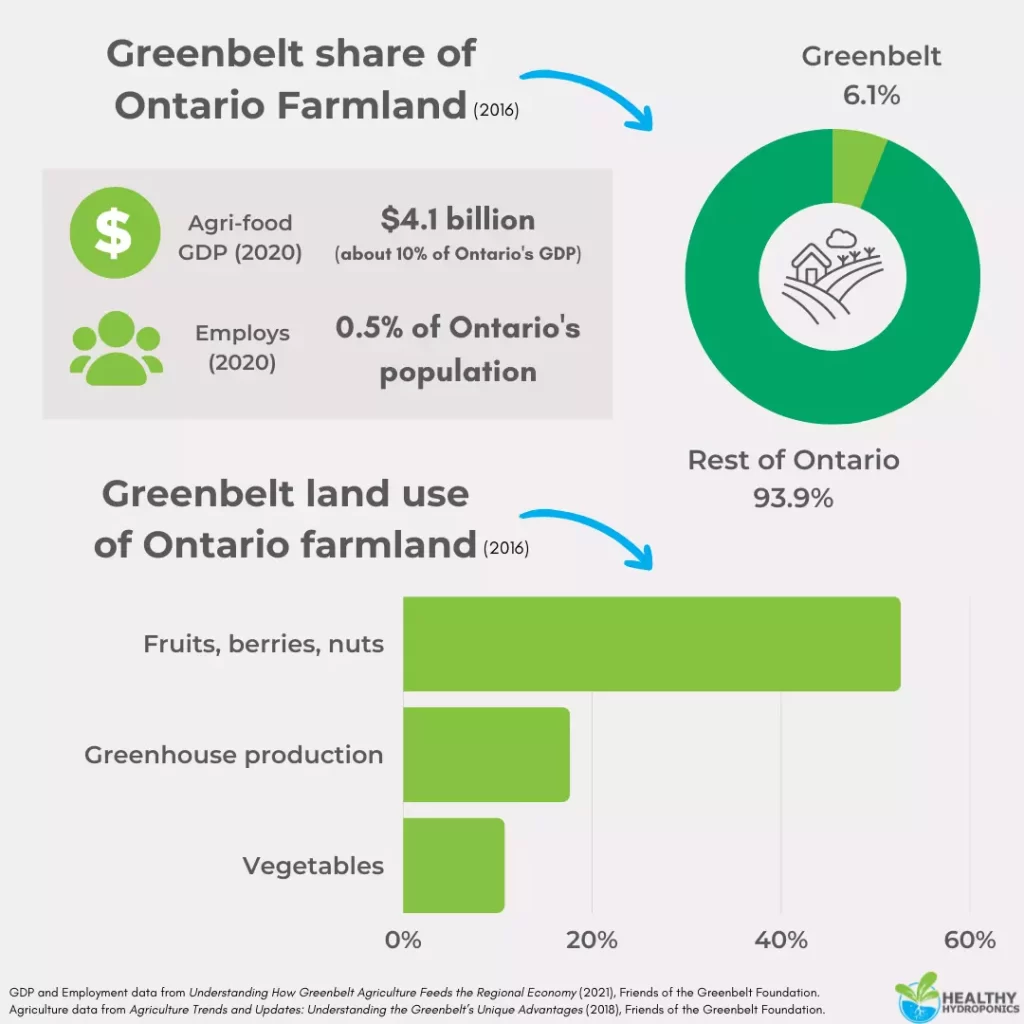
Field-grown crops generally produce more volume and variety than indoor crops in Ontario
Although the technological advancements of hydroponics and controlled-environment agriculture have allowed certain fruits and vegetables to be produced more efficiently and year-round, the volumes and variety of indoor-grown foods still lag behind field-grown crops.
In the latest Agriculture and Agri-Food Canada statistical reports (2020), Ontario produced 2.7 times more tonnage in field vegetables (1.3M metric tons) than indoor vegetable and fruit production combined (481,763 metric tons). The volume of field-grown tomatoes is almost twice as much as the indoor-grown tomatoes in Ontario. Indoor fruits and vegetables have been limited to mostly tomatoes, cucumbers, peppers, lettuce, eggplants, herbs, and microgreens, with strawberries quickly on the rise in the last couple of years.
Some field-grown crops, such as potatoes, apples, and cherries, cannot be grown hydroponically or are not feasible to grow indoors in Canada (as of yet). We still need local field crops, in addition to imports, to help feed the growing population in Ontario.
The Greenbelt provides ecosystem services for clean air and water naturally and free of charge
The Greenbelt is home to wetlands, watersheds, and forests that contribute $3.2B worth of ecological services to Ontario annually. These features offer services critical to environmental and human health that we otherwise would have to pay to construct infrastructure for air and water quality security. These systems help to offset 71M tons of carbon or 56.5 million car equivalents of carbon annually. Watersheds and forests filter out water pollutants as water flows through the land.
The Greenbelt also helps prevent floods, valuing $224 million in protection by absorbing water during severe weather events. Flooding is Canada’s costliest extreme weather event, costing millions of dollars in property damage and increasing the risk of water contamination.
Water is vital to life, to say the least. It is necessary for communities and farms to have access to clean water to drink, irrigate crops, feed livestock, and support industrial uses. Local and naturally existing ecosystems support not only farms in the Greenbelt but the surrounding urban areas, known as the Golden Horseshoe. The Oak Ridges Moraine is a 12,000 year old landform with wetlands and aquifers from where water flows into Lake Ontario and Lake Simcoe, which many Ontarios depend on for clean drinking water.
What can we do now?
With the passing of Bill 23 to build on the Greenbelt, the cost of living will continue to rise, and the quality of life to decline. Continuing to voice our opinion on this matter is important for potential repeal and intervening action by the federal environment minister.
Below we’ve included petitions and efforts organized by grassroots organizations. We encourage you to write comments and letters to your local government representative and/or share your thoughts on social media.
- Stop urban sprawl in the Ontario Greenbelt (change.org)
- Submit comments to the Environmental Registry of Ontario as suggested by the Canadian Environmental Law Association
Let’s help support Ontario’s food security for all and future generations.
Banner image: Photograph by Haljackey, distributed under the Creative Commons Attribution-Share Alike 3.0 Unported license.
![]()
Rebecca Co is the Manager of Innovation and Project Manager at Healthy Hydroponics


